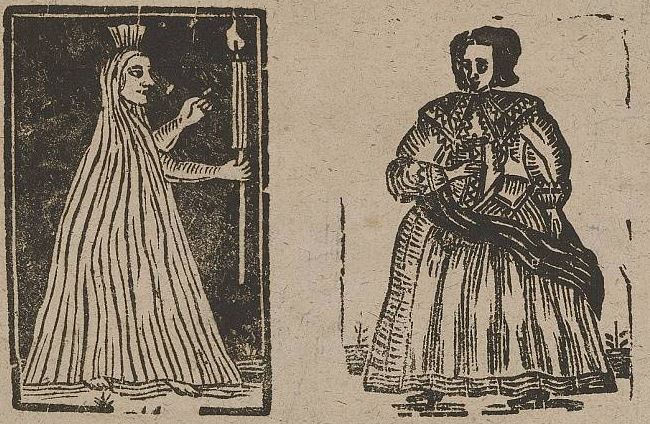Let me tell you a ghost story. I was reading the book “The Ghost: A Cultural History”, and I was reminded of one of my favourite early modern ballads featuring a ghost. For context, ballads would usually be about current events, and tended to be very sensationalised versions of the news set to familiar melodies. There were lots of ballads …
Medieval True Crime: When a Corpse Solved Its Own Murder
In 1503, in the quiet Swiss village of Ettiswil, a woman’s corpse was laid out in the churchyard. Her name was Margaretha, and she had died suddenly; too suddenly, some whispered. Her husband, Hans Spiess, had fled the town, but he was eventually tracked down and brought back to face justice. Justice, however, didn’t mean what we might expect. Spiess …
The Censored Witches’ Flying Potion (That Promised a “Lover”)
“Rub this on your skin, get a lover.” That’s not clickbait. It’s a sixteenth-century recipe, written in all seriousness by the Italian natural philosopher Giambattista Della Porta. He recorded the formula for an ointment, said to be used by witches. The claim was that it could induce an extraordinary phenomenon: it would make the witch believe she was flying and …
Fake Virginity: The Painful Renaissance ‘Cures’ They Sold Women
CW: “Historical discussion of sexual coercion, blood & bodily harm” In Renaissance Europe, failing to bleed on your wedding night could cost a woman her dowry, her marriage – even her safety. So, of course, someone offered a solution. A 17th-century English translation of an Italian book called Magia Naturalis puts it like this: In case that wasn’t clear: the …
Before TikTok: History’s ORIGINAL Influencers
Scrolling through TikTok, Instagram, YouTube… it feels like influencers are everywhere, a thoroughly modern invention, right? But what if I told you the original influencers weren’t crafting viral videos, but commanding royal courts, dazzling high society, and shaping empires centuries ago? And the recent Met Gala? It gave us a perfect glimpse into one fascinating branch of this long history …
How Water Cures Revolutionised Medicine in the 16th Century
This was written by one of my favourite historical characters, the ever-charming surgeon often accused of being a charlatan, Leonardo Fioravanti. But hold on, because here’s another juicy 16th-century quote: Hmmm… Intriguing, right? This was actually a popular proverb that writer Michel de Montaigne heard from locals while travelling through Italy. So, what exactly was going on in these baths? …
Hypocras: The Medieval Wine Doctors Prescribed as Medicine
What if I told you one of the most popular medicines in medieval Europe was also the trendiest party drink? Hypocras (or ‘hypocras’ if you stick to the French pronunciation) was a spiced and sweetened wine so prestigious that kings gifted it to each other; it was believed to be so medically effective that doctors prescribed it, and so delicious …
How Latin America Shaped Germ Theory (But History Overlooked It)
Imagine this: It’s 1910, and you’re strolling through an international medical conference in Europe. The legacies of Louis Pasteur and Robert Koch are being celebrated for discovering that tiny microbes—not “bad air”—cause diseases. Revolutionary! Groundbreaking! The audience applauds these European geniuses who saved humanity! And then, from the back of the room, a Brazilian doctor stands up: “Excuse me, but …
The Yellow Wallpaper: Behind the ‘Madness’ in the Pattern
Alone in her sick room in the late 19th century, a woman writes: What is going on? Still, she thinks: The narrator of this story is being treated by her husband, John, who is a doctor. Victorian medicine had some rather peculiar ideas about women’s mental health. Take, for instance, the notion that intellectual stimulation could damage a woman’s reproductive …
How Urine Revealed Fertility in Renaissance Medicine
If a couple can’t have children and you want to know whose ‘fault’ it is, what do you do? Well, if we’re talking about Renaissance Italy, you might give this experiment a try. This recipe is from a 1529 book called Dificio di ricette, or ‘House of Recipes’ and I came across it recently when I was preparing a talk. …











